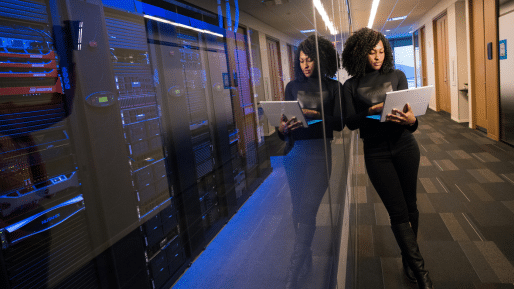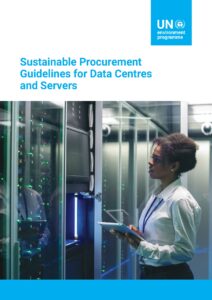Data centres play a critical role in today’s digital world, enabling a wide range of end-user services and functions such as websites, email, social media, streaming, business operations, and many other applications essential to modern life. However, they are among the most energy-intensive facilities, with a significant carbon footprint.
The International Energy Agency estimates that data centres will drive more than 20 per cent of the growth in electricity demand between now and 2030. The global demand from data centres is set to more than double over the next five years, consuming as much electricity by 2030 as Japan does today, according to estimates. Data centres and data transmission networks were responsible for 1 per cent of energy-related greenhouse gas emissions in 2020, experts say. Efficiency improvements and regulations will be essential to curbing this consumption, but there is currently a lack of effective regulatory frameworks in this sector.
Against this background, UNEP’s United for Efficiency (U4E) has developed the Sustainable Procurement Guidelines for Data Centres and Servers. These guidelines are designed to help organisations establish robust criteria and processes that enhance the energy efficiency of their existing or upcoming facilities.
Rising Demand and Energy Challenges
The number of data centres is rapidly increasing, driven by economic growth, the surge in data demand—particularly from edge computing (data processed closer to users via smart devices)—and the rise of data-intensive technologies such as artificial intelligence and cryptocurrencies. Lower connectivity costs and a growing emphasis on data sovereignty are also contributing factors.
Global investment in secure and reliable data infrastructure is expanding to meet this rising demand. Data centres require a large amount of energy to operate servers, networking equipment, lighting, air distribution systems, and cooling systems. Additionally, many rely on refrigerants and consume substantial amounts of water for cooling purposes.
The new Guidelines produced by U4E offer recommendations on several key performance criteria and operating conditions that are most relevant and impactful for the selection of energy-efficient data centres and computer servers. Several Key Performance Indicators (KPIs) have been standardised for energy use (Power Usage Effectiveness – PUE), the share of renewable energy used (Renewable Energy Factor – REF), water consumption (Water Usage Effectiveness – WUE), and overall server efficiency (IT Equipment Energy Efficiency for servers – ITEEsv), among others.
Countries are encouraged to use the Guidelines to regulate the data centre sector, as there is a widespread lack of strong regulations and incentives to support the transition to more efficient, sustainable operations. The document serves as a key reference for establishing minimum performance standards, developing labelling schemes, or enabling procurement processes that encourage innovative solutions aligned with these criteria.
Supporting the development of systems and processes that enhance the energy efficiency of data centres can reduce energy consumption and operating costs (improving competitiveness), preserve scarce high-quality resources (such as water and electricity), lower the carbon footprint and help countries meet their digitalization and environmental objectives/commitments, to name just a few advantages.
The Guidelines were developed with the valuable input of numerous experts, partners, and stakeholders from the sector who contributed to its content and review, including ASEAN Energy, the European Commission, the Lawrence Berkeley National Laboratory, the IBM Corporation, and Google.
For more information on the Sustainable Procurement Guidelines for Data Centres and Serves, please get in touch with Patrick Blake (patrick.blake@un.org) or Soledad Garcia (soledad.garcia@un.org).




Leave a Reply